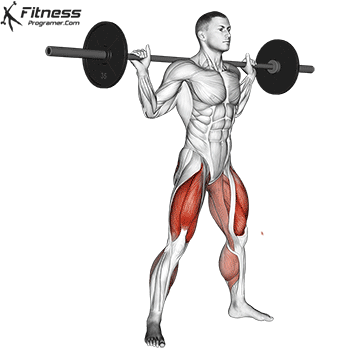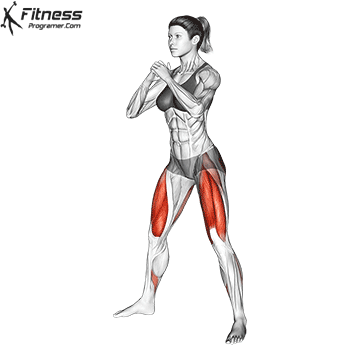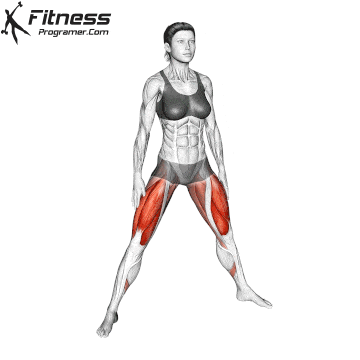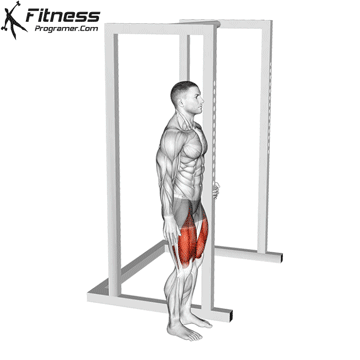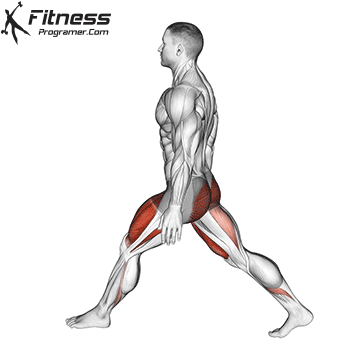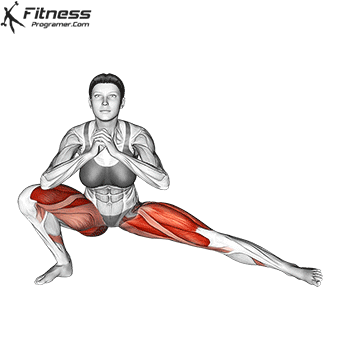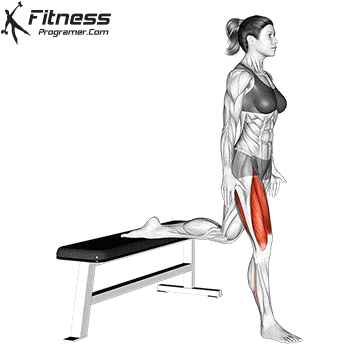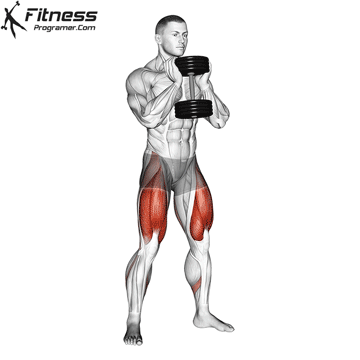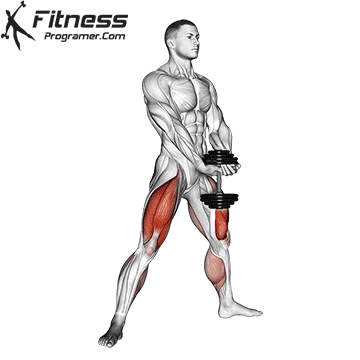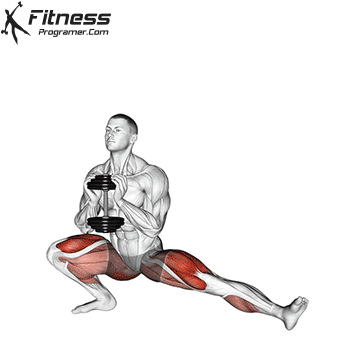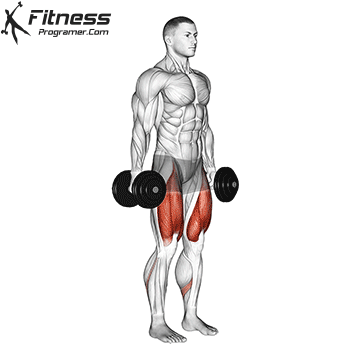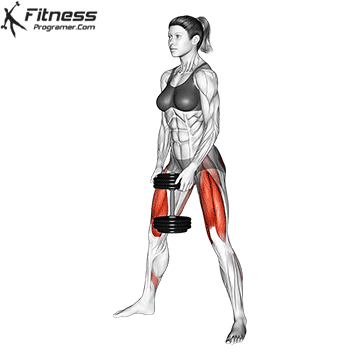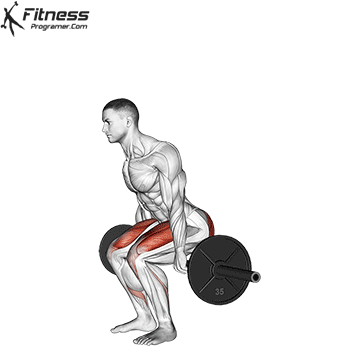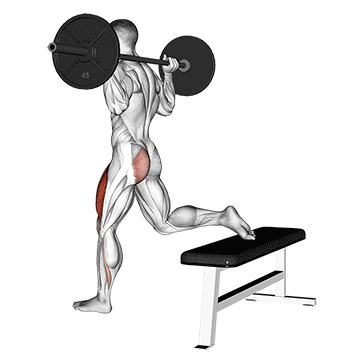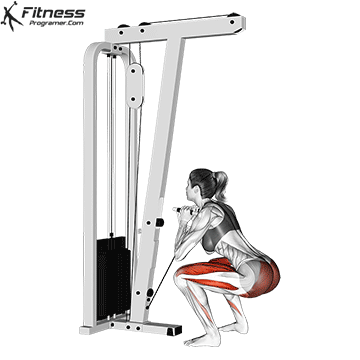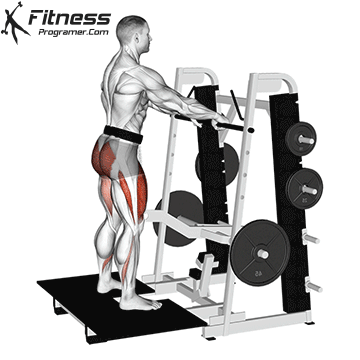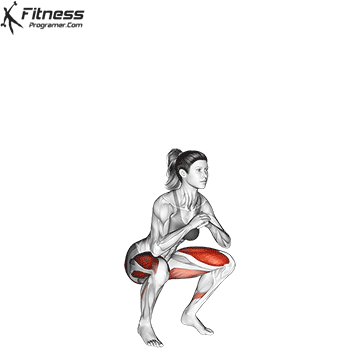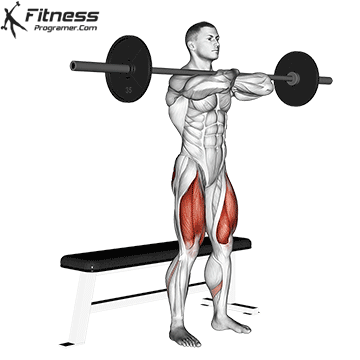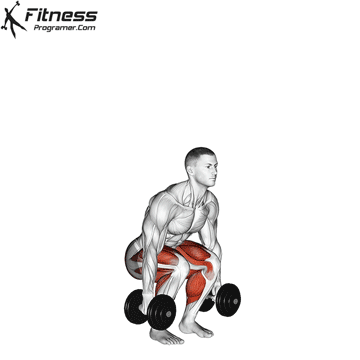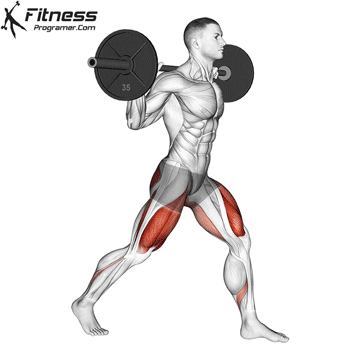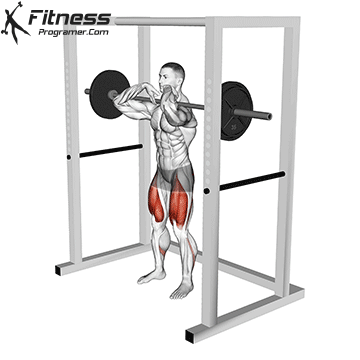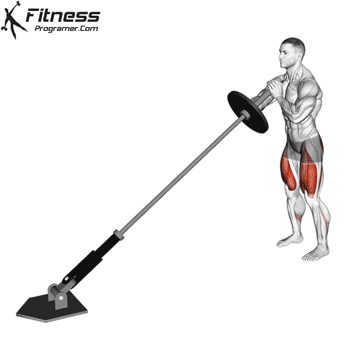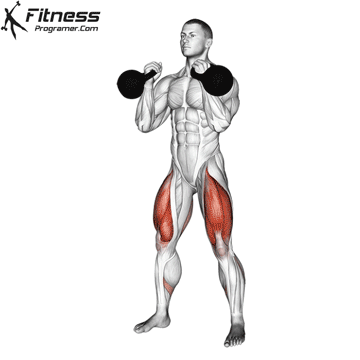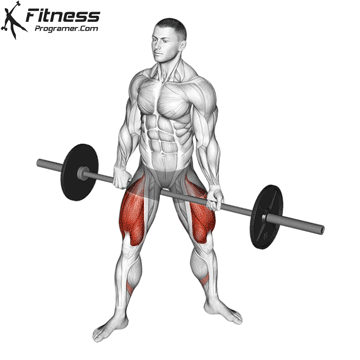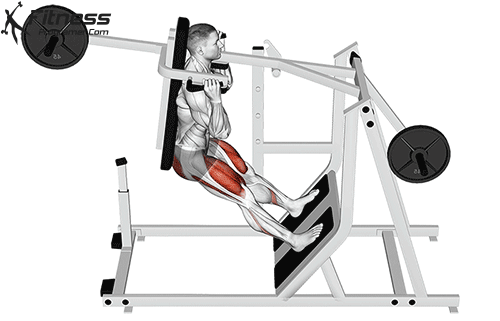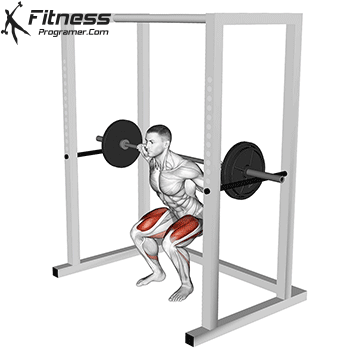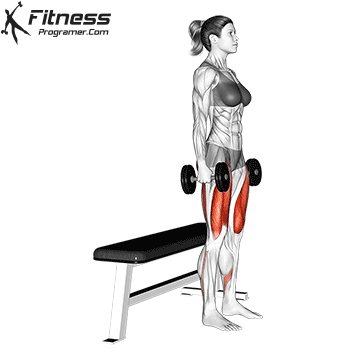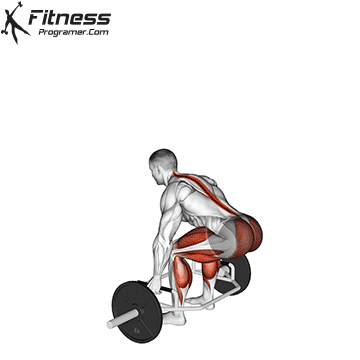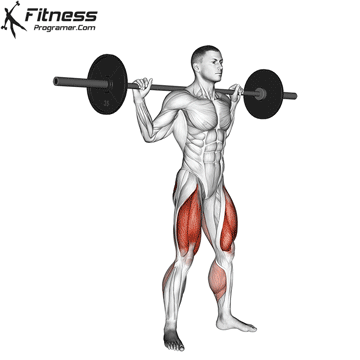Overview
The barbell sumo squat is a compound exercise that primarily targets the muscles in the lower body, including the quadriceps, hamstrings, glutes, and inner thighs. It helps develop lower-body strength, increase muscle mass, improve functional movement, and contribute to better athletic performance. It is used in strength training, functional routines, and in conjunction with compound and isolation exercises in a variety of fitness programs.
How to do Perform Barbell Sumo Squat
-
Set a barbell on your upper traps in a squat rack and step under it with a wide stance.
-
Position your feet wider than shoulder-width, with your toes turned out about 30 degrees.
-
Brace your core and keep your chest tall as you unrack the barbell and step back.
-
Lower your hips straight down, keeping your knees in line with your toes.
-
Descend until your thighs are parallel to the floor or slightly below if mobility allows.
-
Drive through your heels and midfoot to return to standing, squeezing your glutes at the top.
Tips for Proper Form
-
Keep your knees tracking over your toes to avoid knee stress.
-
Maintain a tall chest and straight spine throughout the movement.
-
Brace your core to support your lower back.
-
Use a comfortable grip on the barbell, keeping elbows pointed down.
-
Focus on pushing the floor apart with your feet to engage the inner thighs.
Common Mistakes
-
Letting knees collapse inward, which reduces inner thigh engagement.
-
Leaning too far forward, placing stress on the lower back.
-
Not using a full range of motion, which limits muscle activation.
-
Rounding the back, especially under heavy load.
-
Placing the barbell too high or too low, causing imbalance.
Benefits of the Barbell Sumo Squat
- Increase in Muscle Mass: Performing barbell sumo squats with appropriate weights helps increase muscle mass, especially in the legs and lower-body muscles.
-
Targets Inner Thighs and Glutes: The wide stance activates the adductors and glutes more than traditional squats.
-
Improves Hip Mobility: The sumo squat encourages deeper range of motion and greater hip opening.
-
Enhances Posterior Chain Strength: The movement works the hamstrings and glutes, essential for explosive power.
-
Supports Knee and Ankle Stability: The foot position helps train proper knee alignment and foot control.
-
Reduces Lower Back Strain: The upright torso position lessens forward lean and pressure on the spine.
-
Great for Strength Progression: The barbell allows for progressive overload in a controlled, safe position.
-
Improves Athletic Movement Patterns: Lateral and vertical force production improves with regular sumo squat training.
How to Incorporate Into Your Routine
- For Beginners: Start with 2 to 3 sets of 6 to 8 reps using an empty barbell or light load to build technique.
- For Hypertrophy: Perform 3 to 4 sets of 8 to 12 reps, focusing on muscle activation and time under tension.
- For Strength: Use 4 to 5 sets of 4 to 6 reps with a heavy load and longer rest periods.
- For Functional Training: Integrate 2 to 3 sets of 8 reps to reinforce hip control and posterior chain engagement.
- For Circuit Training: Do 10 reps of barbell sumo squats within a strength or conditioning circuit for a full-body burn.
- For General Fitness: Include 3 sets of 10 reps in your leg routine for overall strength and mobility.
- For Mobility or Recovery: Use a light barbell or bodyweight to perform slow, deep reps and open the hips.
Barbell Sumo Squat Muscles Worked
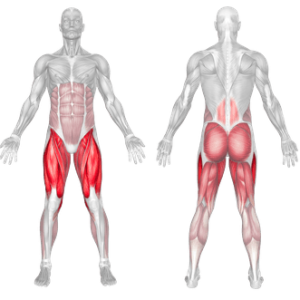
Frequently Asked Questions
Is the Barbell Sumo Squat better than regular squats for inner thighs?
Yes. The wide stance specifically targets the inner thighs more effectively than a traditional stance.
Can beginners do the Barbell Sumo Squat?
Yes. Start with a lighter load and focus on mastering your range of motion and knee alignment.
Should I place the bar high or low on my back?
Use a high-bar position for a more upright posture and reduced forward lean.
Can it replace the traditional barbell squat?
It can complement or temporarily replace it, especially if your goal is glute and adductor development.

